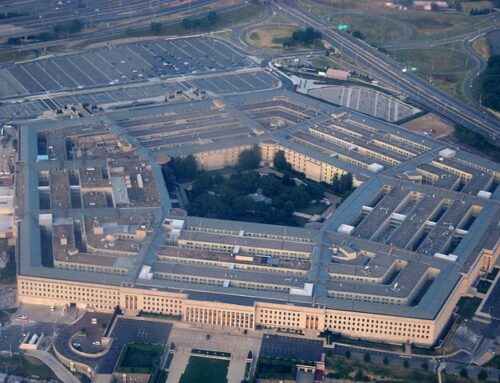This op-ed by TCS President, Ryan Alexander was published in Stars and Stripes on June 15, 2018
As Congress begins work on spending bills for fiscal year 2019, a little-noticed, duplicative program was included in the last omnibus spending package. The European Deterrence Initiative (EDI) is one of the latest rabbit holes down which the Pentagon has been chucking billions from its burgeoning budget. Originally meant to supplement U.S. commitment to NATO, EDI has taken on a funding life of its own.
When first announced in 2014, then-President Barack Obama intended EDI — then known as the European Reassurance Initiative — to be modest by Pentagon standards, calling on Congress “to approve up to $1 billion to support this effort.” Initial FY 2015 allocation was $985 million. In FY 2016, funding for the program actually went down, dropping to $789 million.
Then things changed. Funding jumped to $3.4 billion in FY 2017 — more than tripling previous funding. In the FY 2018 omnibus, EDI received $4.8 billion. The request for FY 2019 is $6.5 billion. This may represent an increase of only 37 percent over the current level, but all told, the proposed FY 2019 budget represents funding growth of more than 560 percent over the short five-year life of the program.
As if this weren’t dramatic enough, EDI raises other red flags for taxpayers.
First, EDI is funded through the Pentagon’s Overseas Contingency Operations (OCO) accounts, which are supposed to fund unanticipated military operations and disaster assistance. While the training exercises and purchasing of pre-positioned equipment funded through EDI may be overseas, they are not contingencies. Exercises are regularly scheduled events planned years in advance, while pre-positioned equipment is meant to meet some future unknown need, rather than a current incident. This is the antithesis of a “contingency” and another troubling sign of how OCO funds are spent on things that may be overseas but are clear “base” budget items.
Second, for over half a century, NATO has served as the cornerstone of our nation’s commitment to providing security in Europe. This commitment has remained strong post-Cold War as the alliance has evolved to meet new threats to security and stability throughout the region and, increasingly, other parts of the world. Yet, from a funding perspective and with little notice, EDI has eclipsed NATO as our main method of engagement in Europe.
Not that our commitment to NATO has diminished. The U.S. continues to carry the lion’s share of the financial burden of the alliance. As my organization, Taxpayers for Common Sense, wrote about EDI in 2016, the U.S. funds 22 percent of NATO’s annual operating budget, far more than any other nation. (The next closest contributor to overall costs is Germany at 14.6 percent.)
How much does the U.S. actually spend on NATO? That’s a harder question to answer than it should be. Annual contributions from alliance members don’t cover the costs of actual NATO military operations or training exercises, which are generally funded by participating individual nations. Here’s one way to look at it: NATO members make direct cash payments to support what are referred to as “Common Funding Arrangements.” These payments support NATO’s staff and operating costs of alliance headquarters, NATO’s military budget (which covers the costs of the alliance’s integrated command structure and not actual operations), and the NATO Security Investment Program, which helps improve military capabilities of member nations. According to the NATO Secretary General’s Annual Report for 2016, the total cost for these programs for one year totaled 2 billion euros — roughly $2.5 billion; 22 percent of that comes out to roughly $550 million.
Remember EDI’s proposed budget? $6.5 billion.
That doesn’t just exceed NATO’s core annual spending, let alone the 22 percent contributed by the U.S. According to Stockholm International Peace Research Institute’s Military Expenditure Database, which charts global military spending trends, that $6.5 billion is higher than the entire military budgets of 19 NATO member countries, and greater than combined total military spending of the 12 NATO nations with the smallest defense budgets.
In 2016, my organization asked, “where is the taxpayer’s reassurance that this money is being spent wisely and appropriately and that this seemingly never-ending slush fund will actually end?” Changing “reassurance” to “deterrence” sure isn’t the answer, because even as the Pentagon continues to flood EDI with funds, taxpayers still await an answer.










